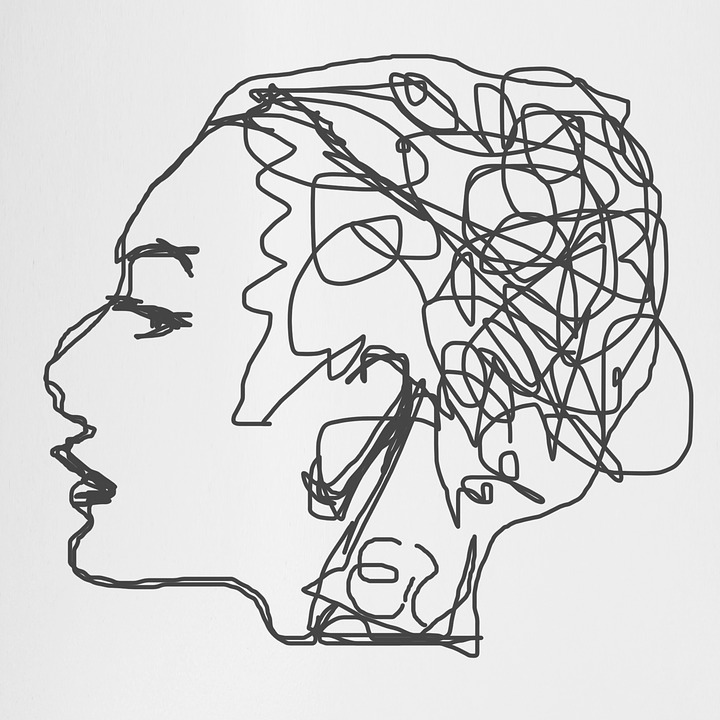


Henk Jan Conradi’s (Clinical Psychology) question:
Dear Richard,
At the clinical psychology department we are, of course, interested in psychotherapy. Starting points for change differ between psychotherapies. Some start from cognitions, others from behavior or emotions. Part of your intriguing research is the detection of action potentials in brain areas associated with these various starting points. I wondered what your research teaches us about the order (timing) of activity in these brain areas under ‘natural’ circumstances (i.e., not attending therapy). For example, do emotions precede action tendencies and do action tendencies precede cognitions? Additionally, what do you think are the more sustainable agents of change: change of emotions, behavior and/or cognitions?
Henk Jan
Richard Ridderinkhof’s (Clinical Developmental Psychology) answer:
Dear Henk Jan,
Imagine having an itch that triggers the irresistible impulse to scratch. Although the motive (to do away with the itch) is not necessarily a consciously set goal, the action (scratching) is purposive: it implements the aim of its motive, namely getting rid of the itch. One may or may not become aware of the itch, or of the motive to get rid of it, or of the act of scratching. In either case, Nico Frijda would call this emotional action.
In Frijda’s view, emotional acts are determined by their end: the motive of the action is its desired end state (no itch). Emotional actions serve the purpose of rendering one’s relation to the state of the world more pleasant (or less unpleasant). These motives give rise to states of action readiness. Changes in action readiness form the key to what he calls emotions. Appraisal of events imparts purpose by giving rise to a state of action readiness to change one’s relation to the world. An itch sucks; we want to get rid of it. Emotional action deals with the present situation by correlating it with relevant concerns, and valuating the courses of action that will be most likely to lead to its desired end. Purposive action entails prediction of intended outcomes. Beyond being purposive, emotional actions comprise an impetus for action – an inclination to do something – with a certain strength or urgency.
Thus, we can distinguish subcomponents of emotional action, with a specific temporal ordering: appraisal (vis-a-is norms, preferences, interests); forming a motive (a pragmatic idea of the desired action effect); action readiness (thinking of the effects of an action tends to set the action in motion, at least incipiently); valuation of action options (in terms of their aptness for bringing about the desired action effects); prediction of the selected action’s sensory effects (comparison of predicted and desired action effects yields a prediction error that can be used to optimize action selection); and finally the motor act itself.
The itch/scratch example illustrates that emotions, cognitions, and action tendencies are heavily intertwined. Rather than attempting to determine their temporal ordering, we can examine Frijda’s subcomponents to look for ‘agents of change’. Interventions may target appraisal (emotional reappraisal), concerns (cognitive reappraisal), or action tendencies (valuation/selection/prediction). Depending, I guess, on individual needs and affordances – obviously, I’m no clinician…
Hope this helps.
Richard
Richard Ridderinkhof’s question is for Marte Otten (Brain & Cognition):
Dear Marte,
Your recent finding that human memory gets unreliable within seconds incited massive media exposure. Congrats! But how adequate was that coverage, in your experience? In interacting with the media, how do you navigate the balance between scientific accuracy and mediagenic coolness? At the end of the day, was the whole circus just an amusing (or perhaps bothersome) distraction, or was it somehow enriching to you? For instance, did any exciting new questions (or insights) arise?
Richard

Henk Jan Conradi’s (Clinical Psychology) question:
Dear Richard,
At the clinical psychology department we are, of course, interested in psychotherapy. Starting points for change differ between psychotherapies. Some start from cognitions, others from behavior or emotions. Part of your intriguing research is the detection of action potentials in brain areas associated with these various starting points. I wondered what your research teaches us about the order (timing) of activity in these brain areas under ‘natural’ circumstances (i.e., not attending therapy). For example, do emotions precede action tendencies and do action tendencies precede cognitions? Additionally, what do you think are the more sustainable agents of change: change of emotions, behavior and/or cognitions?
Henk Jan

Richard Ridderinkhof’s (Clinical Developmental Psychology) answer:
Dear Henk Jan,
Imagine having an itch that triggers the irresistible impulse to scratch. Although the motive (to do away with the itch) is not necessarily a consciously set goal, the action (scratching) is purposive: it implements the aim of its motive, namely getting rid of the itch. One may or may not become aware of the itch, or of the motive to get rid of it, or of the act of scratching. In either case, Nico Frijda would call this emotional action.
In Frijda’s view, emotional acts are determined by their end: the motive of the action is its desired end state (no itch). Emotional actions serve the purpose of rendering one’s relation to the state of the world more pleasant (or less unpleasant). These motives give rise to states of action readiness. Changes in action readiness form the key to what he calls emotions. Appraisal of events imparts purpose by giving rise to a state of action readiness to change one’s relation to the world. An itch sucks; we want to get rid of it. Emotional action deals with the present situation by correlating it with relevant concerns, and valuating the courses of action that will be most likely to lead to its desired end. Purposive action entails prediction of intended outcomes. Beyond being purposive, emotional actions comprise an impetus for action – an inclination to do something – with a certain strength or urgency.
Thus, we can distinguish subcomponents of emotional action, with a specific temporal ordering: appraisal (vis-a-is norms, preferences, interests); forming a motive (a pragmatic idea of the desired action effect); action readiness (thinking of the effects of an action tends to set the action in motion, at least incipiently); valuation of action options (in terms of their aptness for bringing about the desired action effects); prediction of the selected action’s sensory effects (comparison of predicted and desired action effects yields a prediction error that can be used to optimize action selection); and finally the motor act itself.
The itch/scratch example illustrates that emotions, cognitions, and action tendencies are heavily intertwined. Rather than attempting to determine their temporal ordering, we can examine Frijda’s subcomponents to look for ‘agents of change’. Interventions may target appraisal (emotional reappraisal), concerns (cognitive reappraisal), or action tendencies (valuation/selection/prediction). Depending, I guess, on individual needs and affordances – obviously, I’m no clinician…
Hope this helps.
Richard
Richard Ridderinkhof’s question is for Marte Otten (Brain & Cognition):
Dear Marte,
Your recent finding that human memory gets unreliable within seconds incited massive media exposure. Congrats! But how adequate was that coverage, in your experience? In interacting with the media, how do you navigate the balance between scientific accuracy and mediagenic coolness? At the end of the day, was the whole circus just an amusing (or perhaps bothersome) distraction, or was it somehow enriching to you? For instance, did any exciting new questions (or insights) arise?
Richard



